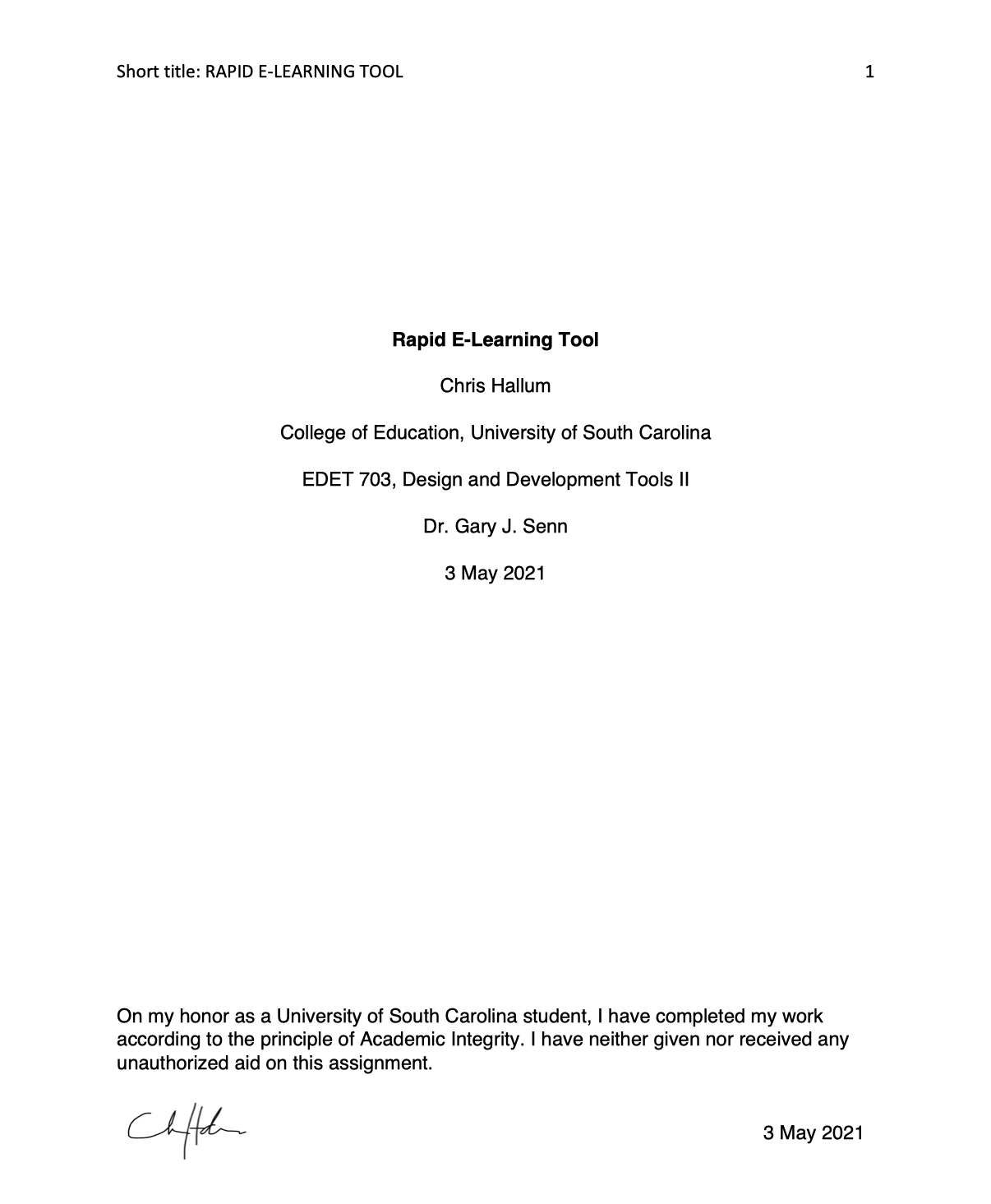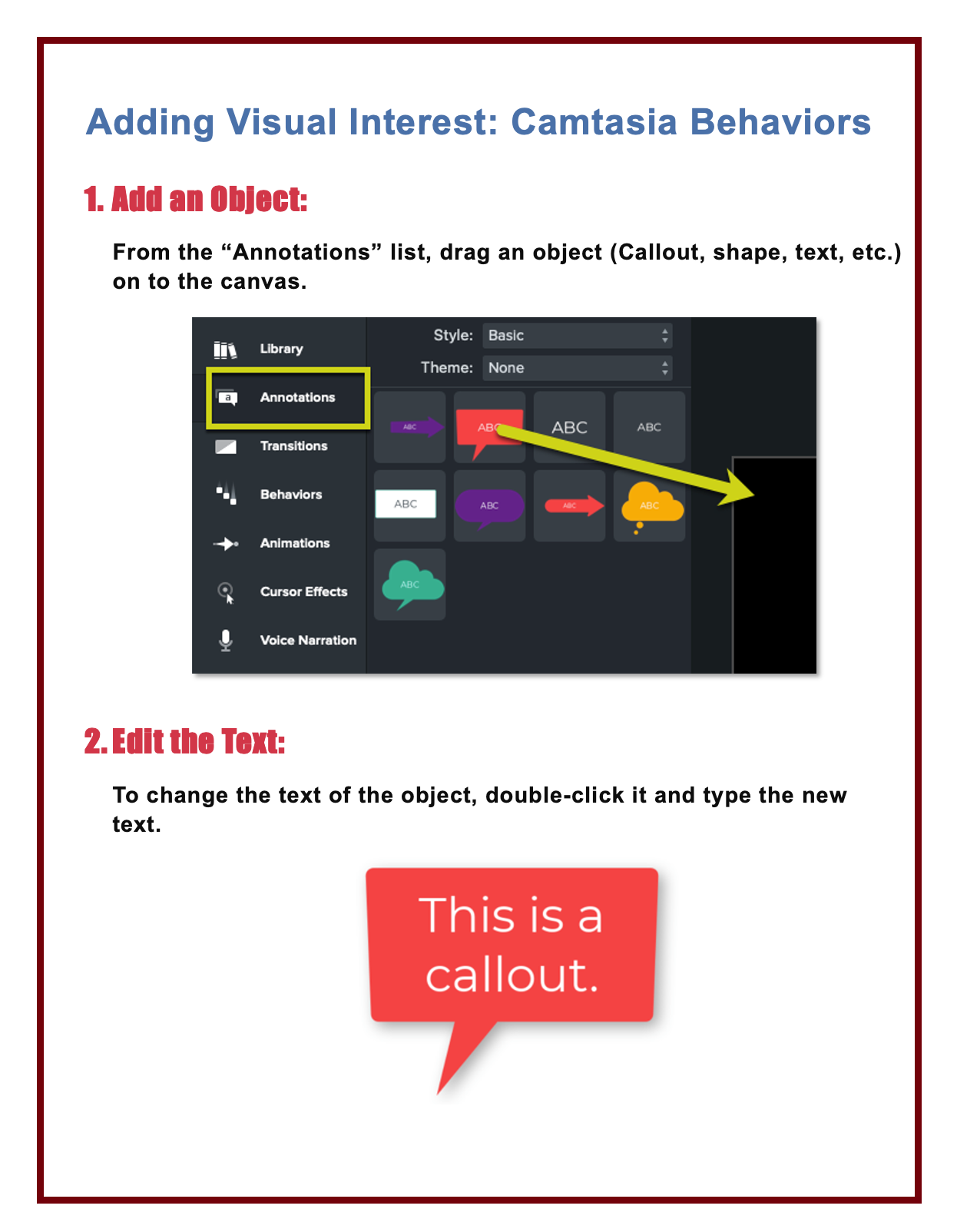AECT Standard 2
Early (novice) example
My Rapid E-Learning Tool was created in spring 2021 as a part of an assignment for EDET 703, and the final product was presented in Articulate Rise 360. I brought my knowledge and experience as a music educator to this project, the purpose of which was to teach songwriters what it means to be in a major key.
This module is intended to be a follow-up to the interactive e-learning module created in EDET 722, which taught some of the basics of music theory to songwriters. Given the basic concepts presented the EDET 722 module, songwriters should be able to go through the content in the EDET 703 module and start to delve more deeply into aural skills needed to identify chords and keys associated with actual hit songs that were Billboard number one hits. For this module, I was the instructional designer, developer, and SME, and I worked on my own.
Though elements of the instructional design model used to create this artifact are similar to that of Morrison et al., (2019) and also more broadly the ADDIE model (Molenda, 2015), the Rapid E-Learning Tool was created using the Smith and Ragan Model (Smith & Ragan, 1999), which encompases three broad sections: Analysis, Strategy, and Evaluation. The formative evaluation is planned for the future and will only be conducted once a prototype is in place and actual songwriters have gone through the module in order to provide accurate feedback on its effectiveness.
The Rapid E-Learning Tool reflects both the “Creating” and “Assessing/Evaluating” indicators included under AECT Standard 2 – Pedagogy (Januszewski, Molenda, et al., 2008, as cited in AECT Standards, 2012 Version, n.d.). Given the Smith and Ragan (1999) model’s emphasis on evaluation to continually make instructional products better over time, the Rapid E-Learning Tool project has great potential to become more effective over time; this emphasis on continual evaluation also aligns with other instruction design models’ recommendations, such as that of Morrison et al. (2019).
I really appreciated learning and implementing the simple structure of the Smith and Ragan (1999) model for this project, and though I did not completely carry out all the elements in my final Articulate Rise 360 product (e.g., the actual assessment and revision of the module over time), it helped me to plan it all out and to consider the long-term implications of follow-up assessments and evaluations. For example, in recent months, I have grown increasingly interested in creating instructional design workflows that are themselves as flexible as possible, and that theoretically—given proper and thorough planning—could be used to make even a mediocre instructional design product quite good over time.
Late (more professional) example
I created the Camtasia Job Aid as a part of my Instructional Design Internship (EDET 650) with the University of South Carolina’s Center for Teaching Excellence (CTE). I came to this project with a good deal of previous experience with Camtasia, so it made sense to create this job aid for the CTE when my entire internship purpose centered around some sort of product related to the use of Camtasia.
The Camtasia Job Aid was initially thought to be a product that would be included in some sort of internal CTE employee database where it could be accessed easily to perform the task described therein. However, through further discussion, we later decided that my primary project for the internship would be to create some instructional videos for learners in the CTE online course, Technology for Online Teaching and Learning, so the Job Aid ended up being a stand-alone product. For this Job Aid, I was the instructional designer, developer, and SME, and I worked on my own.
My supervisor for the CTE Internship was Dr. Aisha Haynes, and under her direction, I created the job aid, which was created in direct response to her own felt need (Morrison et al., 2019) for such a product. The job aid was created before any analysis (Molenda, 2015) was completed, so the development and design (Molenda, 2015) parts of the ID process were carried out simply based on Dr. Haynes’ impressions that the CTE would have a use for it. That said, Dr. Haynes was happy with the final job aid, though she noted that it probably would have been better to do the needs analysis first, to get an idea as to the kind of job aid needed.The CTE job aid reflects the “Creating” indicator included under AECT Standard 2 – Pedagogy (Januszewski, Molenda, et al., 2008, as cited in AECT Standards, 2012 Version, n.d.).
Though this project was meant to fill a need expressed by Dr. Haynes, it actually turned into a completely different learning experience for me as an instructional designer. Specifically, I learned that very few of the tools we use as instructional designers to make visual content (e.g., TechSmith’s Snagit or Canva) are made to be accessible to screen readers right out of the box. In fact, it is better to simply use Microsoft Word, being careful to avoid possible screen reader pitfalls like tables, excessive line breaks, etc., than it is to use tools that simply make the content look good visually. I still have a long way to go in my journey learning about accessibility, but this project was a real turning point in my understanding of the diverse needs of all learners.
References
AECT Standards, 2012 version. (n.d.). Retrieved March 8, 2022, from https://www.aect.org/docs/AECTstandards2012.pdf
Allen, M. (n.d.). Rapid Instructional Design & Development with SAM | Allen Interactions. Retrieved March 12, 2022, from https://www.alleninteractions.com/allen-interactions-rapid-instructional-design-and-development-with-sam
Januszewski, A., Molenda, M., & Harris, P. (2008). Educational Technology: A Definition with Commentary. Lawrence Erlbaum Associates.
Molenda, M. (2015). In search of the elusive ADDIE model. Performance Improvement, 54(2), 40–42.
Morrison, G. R., Ross, S. J., Morrison, J. R., & Kalman, H. K. (2019). Designing effective instruction. John Wiley & Sons.
Smith, P. L., & Ragan, T. J. (1999). Instructional design. New York: John Willey & Sons. Inc.
Vogt, N. (2016). State of the News Media 2016: Podcasting-Fact Sheet. Pew Research Center.


